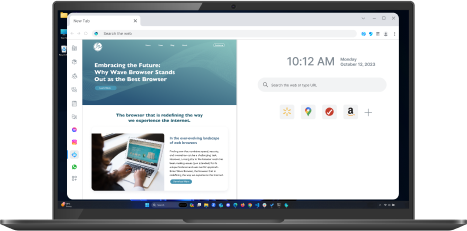3 Best Ways on How to Translate Japanese to English Online
Table of Contents

Translating from Japanese to English can be challenging, especially for beginners. The structure, vocabulary, and cultural context of Japanese differ significantly from English. However, with the right tools and techniques, you can improve your translation skills and ensure accurate results while navigating the internet, especially when accessing content from Tokyo, Japan, or other regions.
In this article, we’ll explore three of the best ways to translate Japanese to English, so you can choose the method that works best for you.
Are There Any Common Challenges or Nuances in Translating Japanese to English?
Translating Japanese to English can be challenging due to the differing sentence structures, honorifics, and context-dependent meanings. Idioms and cultural references may not directly translate, requiring a deep understanding of both languages to convey the message accurately and maintain cultural nuances.
Here are some common ones:
- Context Dependence – Often relies on context rather than explicitly stating subjects or objects, which can make translation tricky.
- Honorifics & Formality Levels – Different politeness levels change the tone and meaning, requiring attention to detail.
- Kanji Ambiguity – Some characters have multiple readings and meanings, requiring interpretation based on context.
- Word Order Differences – Follows a Subject-Object-Verb structure, unlike the Subject-Verb-Object order in English.
- Idioms & Cultural References – Many idioms and expressions don’t have direct English equivalents, making them harder to translate.
- Omission of Pronouns – Often omits pronouns, leading to ambiguity in translation.
- Multiple Words for a Single Concept – Has various words for similar concepts, each with nuanced differences.
- Katakana Loanwords Confusion – Loanwords from English may change in meaning or pronunciation, creating confusion.
- Lack of Plural Forms – Nouns don’t typically indicate singular or plural, making translation more ambiguous.
- Verb Conjugations & Tenses – Uses different verb forms and tenses that don’t always have direct English equivalents.
How to Translate Japanese to English?
Learning how to translate Japanese to English can be challenging, but with the right approach, it’s entirely manageable. Whether you opt for online translation tools, language learning apps, or professional translators, each method has its own benefits depending on the complexity of the text and your personal needs.
For quick translations, online tools like Google Translate and DeepL are great choices. If you’re looking to improve your skills, language apps like Duolingo and Lingodeer provide helpful lessons. However, for professional or specialized translations, hiring a translator ensures the highest accuracy and context.
1. Use Online Translation Tools
One of the easiest ways on how to translate Japanese to English is by using online translation tools. These tools provide quick translations and can be especially helpful when you need to understand short phrases or individual words. Some popular options include Google Translate, DeepL, and Microsoft Translator.
Google Translate

Google Translate is one of the most commonly used translation tools. It supports over 100 languages, including Japanese. While it’s not perfect, it does a reasonable job for everyday translations, such as basic sentences or commonly used phrases.
How to use Google Translate:
- Go to the Google Translate website or open the app (Available on iOS and Android).
- Select Japanese as the source language and English as the target language.
- Type or paste the Japanese text you want to translate, and Google Translate will provide the English equivalent.
- Be aware that idiomatic expressions or complex sentences may need some refinement.
DeepL

DeepL is another online translator that has gained popularity for its high-quality translations. It uses advanced AI to improve the accuracy of translations, especially for more nuanced or complex sentences. Although DeepL is less widely known than Google Translate, it is often regarded as offering more accurate Japanese translations.
How to use DeepL:
- Visit the DeepL website and select the Japanese to English option.
- Paste or type the text you want to translate.
- DeepL will provide a more contextually accurate translation, making it ideal for business or professional content.
Wave Browser’s Built-in Translator

Wave Browser is a relatively new browser that is designed with privacy, speed, and user experience in mind. One of its standout features is its built-in translator, making it an ideal choice for those who frequently need to translate web pages in foreign languages. This feature adds immense convenience by eliminating the need for third-party translation tools or apps, streamlining the process of translating content while browsing.
Learn more about the key features of Wave Browser’s built-in translator:
- Instant translation of web pages: the built-in translator in Wave Browser automatically detects foreign-language pages and offers to translate them into your preferred language with just one click. Whether you’re reading articles in Japanese, Spanish, or French, Wave Browser provides seamless translations directly in the browser.
- No need for extensions: unlike other browsers that require you to install separate extensions or plugins for translation, Wave Browser integrates this feature natively. This ensures that the translated text is smooth and reliable, without the need for extra software or browser add-ons.
- Supports multiple languages: Wave Browser’s translator supports a wide range of languages, so no matter where you're browsing from, you can easily translate foreign content into your native language. This is especially useful for users who interact with global websites or resources that may not have an English version.
2. Translate Using Language Learning Apps
Language learning apps can also be a valuable resource for learning how to translate Japanese to English. These apps are designed to teach you the language in a more interactive and engaging way, which helps you improve your translation skills over time.
Duolingo
Duolingo is a popular app for learning various languages, including Japanese. While it’s not primarily a translation tool, it helps you build foundational knowledge that can make translating easier. The app introduces you to vocabulary, grammar, and sentence structure, which will improve your understanding of both languages.
How to use Duolingo for translation:
- Set Japanese as your learning language.
- Practice regularly with lessons focused on vocabulary and sentence construction.
- As you progress, try translating small phrases from Japanese to English to reinforce your skills.
Lingodeer
Lingodeer is another great option for learners who want to delve deeper into the Japanese language. Unlike Duolingo, Lingodeer focuses more on teaching grammar, sentence structure, and conjugation, all of which are essential when translating effectively. This knowledge helps you make sense of sentence syntax when you need to translate more complex texts.
How to use Lingodeer for translation:
- Use the app to learn Japanese grammar and sentence construction.
- As you understand the structure of sentences better, practice translating short passages into English.
3. Hire a Professional Translator
While online tools and apps are great for quick translations, they may not always be accurate, especially when dealing with specialized topics or nuanced language. If you need a high level of accuracy, hiring a professional translator who truly knows how to translate Japanese to English is a reliable solution.
Professional translators are skilled in both the Japanese and English languages and understand the cultural nuances that affect translation. They can provide a more precise and contextually correct translation for various materials, such as legal documents, technical texts, or marketing content.
How to find a professional translator:
- Look for certified translators with experience in Japanese-English translation.
- Many websites, such as ProZ or Stepes, offer directories of professional translators.
- Consider freelance platforms like Upwork or Fiverr if you're looking for a translator for a specific project.
Find out the benefits of hiring a professor, whether they are Japanese speakers or not:
- Accuracy: professional translators can ensure that your content is accurately translated, especially for technical or specialized topics.
- Cultural sensitivity: a professional can translate not only words but also cultural context, ensuring your message resonates with English-speaking audiences.
- Time-saving: professional translators save you time, especially when dealing with complex or lengthy texts.
No matter which method you choose, with the right tools and some practice, you'll be translating Japanese to English text with confidence in no time!
Surf with Ease, Speed, and Security!

Download Wave Browser for a seamless online experience like never before. Try it now!





